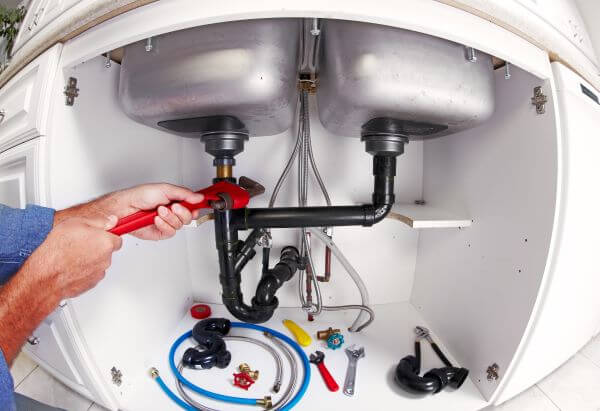It to hire a professional plumber yearly for a thorough inspection of residential plumbing. A professional has the tools and skills to detect issues that a non-plumber might miss. However, this does not mean you always have to get a pro plumber to notice common plumbing issues. Keep an eye out for these things.
Inspection checklist
For a successful inspection routine, this quick checklist can help:
House taps
Every week, homeowners ought to check and test every faucet, spigot, showerhead, and other fixtures that dispense water. Switch on the hot and cold water lines for every fixture and check for low water pressure, stuttering, strange noises or discoloration. When checking the house taps, every bathtub and sink should be examined for warning signs, including foul odors or sluggish drainage. This could mean a clog is forming in the drain pipe.
Odd noises
A sound like a hollow hiss could mean a leak in the toilet tank. To ascertain if leakage is present, flush the toilet, remove the lid over the tank and, after the tank refills, drop in some food coloring. Leave it for 10 minutes. If the food coloring is in the toilet bowl, then there is a leak.
Things to check every month or season
Inspecting a home’s plumbing system every month or season can help a homeowner detect major issues on time before they wreak excessive damage.
Exposed pipes
Examine exposed pipes in the house. Look for any sign of corrosion or damages. Check the joints on the exposed pipes for leakage or failing seals. If the pipes are insulated, ensure the insulation is dry and undamaged.
Emergency shutoff valves
It is crucial to know the location of all the shutoff valves around the house and test them occasionally. After turning the valve, check the faucets served to see if they are still supplying water. Afterward, examine the shutoff valve at the point where the service line from the water meter links with the house and conduct the test again at each faucet.
Water meter
When all the faucets in the house are switched off and the main shutoff valve is engaged, see if the meter changes. If the meter is still reading with the emergency shutoff engaged, the meter may be faulty, or there is a major leak. The chances are that the latter is the culprit.
Water heater
Remove every obstacle around the water heater before the inspection. Avoid touching the pipes of the water heater or the heating element without wearing protection such as gloves or eyewear. Inspect the pipes and heater connections for visible signs of leakages or corrosion.
In conclusion
This residential plumbing inspection checklist can be helpful for detecting many of the most common plumbing issues. Noticing such issues and promptly correcting them helps to prevent costly repairs in the future. For a more elaborate inspection of the pipes underground or behind the walls, ceilings, and floors, you may need to hire a professional plumber.
Get more information here: https://www.bevillstexas.com or call Bevills Plumbing, Heating & Air Conditioning at (325) 225-4115

